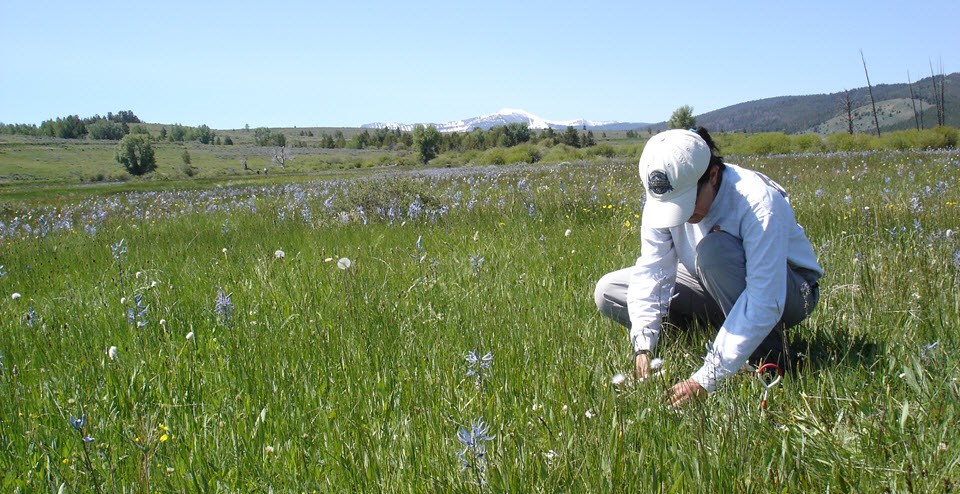
NPS Photo
Importance and Issues
- The nutritious bulb-like root of the camas lily (Camassia quamash) was historically one of the most widely used plant foods of the Nez Perce people, and it remains important for many tribal members today. It is a cultural resource as well as an important part of herbaceous wetlands.
- The camas lily is found in seasonal, wet-prairie ecosystems of the interior Columbia Plateau. Two examples are Weippe Prairie (part of Nez Perce National Historical Park), and along the North Fork Big Hole River (at Big Hole National Battlefield). These ecosystems have been declining, in part due to agricultural conversion, exotic plants, and changes in hydrology.
- Parks use camas lily monitoring information for management decisions and reaching land-health goals. Camas density is increasing at around 7% per year at Weippe Prairie, possibly as a result of NPS acquiring the property in 2003. At Big Hole National Battlefield, camas density is increasing by around 5%.
- Restoration of the Weippe Prairie is now underway and is informed by nine years of camas monitoring data. Our work will continue and will be used to help evaluate the ecological effects of the restoration.
- The UCBN has partnered with parks to develop a citizen science program to support our monitoring. Each year, high school students from communities around Weippe Prairie are trained and join small field teams, supervised by network and park staff, to collect annual camas monitoring data.
Monitoring Objectives
- Estimate mean established plant and flowering stem densities (status) in the camas populations of Weippe Prairie and within the targeted portion of the Big Hole National Battlefield (BIHO).
- Determine trends in the densities of established camas populations in Weippe Prairie and BIHO.
- Determine trends in the proportion of flowering to non-flowering camas plants in Weippe Prairie and BIHO.
- Determine trends in the frequency of occurrence of targeted invasive plants - currently these are orange hawkweed (Hieracium aurantiacum), sulphur cinquefoil (Potentilla recta), reed canarygrass (Phalaris arundinaceae), oxeye daisy (Leucanthemum vulgare) and Canada thistle (Cirsium arvense).
- Determine the magnitude and direction of camas density response to measurable explanatory variables such as winter precipitation, prairie microtopography as measured using high resolution laser altimetry (LiDAR), and specific management and restoration activities.
-
Camas Lily Monitoring in the Upper Columbia Basin Network
Learn about the significance of the camas lily to the Nez Perce people, and about the monitoring of camas populations within Nez Perce National Historical Park.
- Duration:
- 7 minutes, 35 seconds
Reports and Publications
Source: NPS DataStore Saved Search 732. To search for additional information, visit the NPS DataStore.
Source: NPS DataStore Saved Search 712. To search for additional information, visit the NPS DataStore.
Source: NPS DataStore Saved Search 884 (results presented are a subset). To search for additional information, visit the NPS DataStore.
Last updated: December 12, 2018

